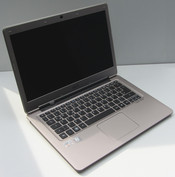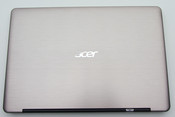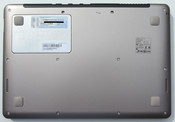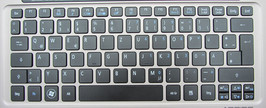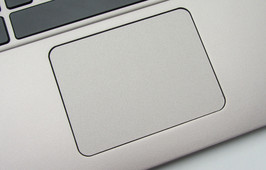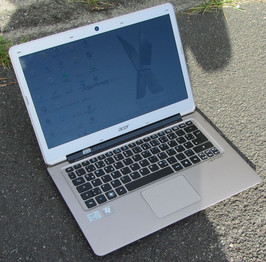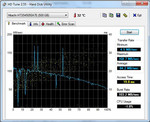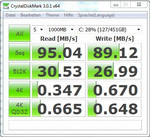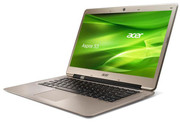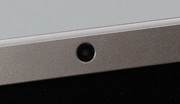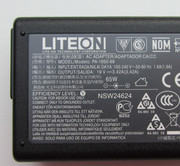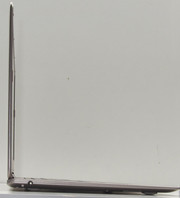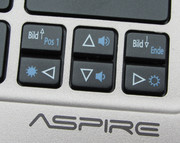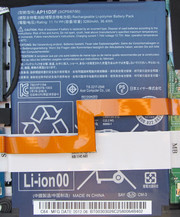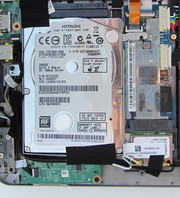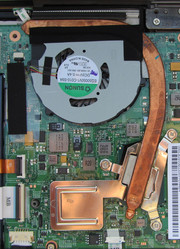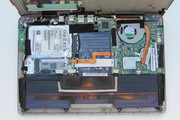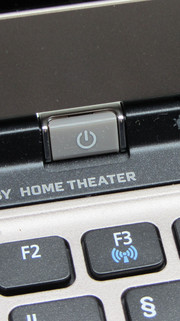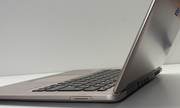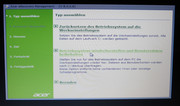Review Acer Aspire S3-391-53314G52add Ultrabook

The Acer Aspire S3-391 is available in three versions. We tested the lowest priced 799 Euro (~$999) version. Our sample device is powered by the dual-core Intel Core i5-3317U processor. The processor is paired to 4 GB of working memory. As is the case with other Ivy Bridge-based notebooks, the processor-integrated Intel HD Graphics 4000 graphics card is responsible for video output. Our system also features a 500 GB hard disk with a 20 SSD cache. The other two Aspire S3-391 versions differ from our test device only marginally. For 100 Euro (~$125) more, the ultrabook can be configured to use a 128 GB SSD instead of a physical hard disk. The most expensive model costs 999 Euro (~$1249) and features the aforementioned SSD as well as the Intel Core i7-3517U.
Competing ultrabooks include the Acer Aspire S3-951-6646 (Intel Core i5-2467M, Intel HD Graphics 3000), Lenovo IdeaPad U310 (Intel Core i5-3317U, Intel HD Graphics 4000), and Fujitsu LifeBook UH572 (Intel Core i5-3317U, Intel HD Graphics 4000).
Case
Compared to the previous Acer Aspire S3-951-6646, the case of our sample Aspire S3-931 is unchanged in terms of both dimensions and weight. Both the base unit and display bezel are made from plastic. Only the display lid is made from aluminum. Overall, the case made a good impression. The specifics of the case can be found in the previously conducted review of the Aspire S3-951-6646.
Connectivity
As with the case, the Aspire S3-391 remains largely unchanged in terms of connectivity and interface placement when compared to the previously reviewed Acer Aspire S3-951-6646. Nonetheless a few of the interfaces have been updated. While the two USB ports are still on the ultrabook’s rear, they now support the USB 3.0 standard as compared to the Aspire S3-951’s USB 2.0 ports. The HDMI port and power socket remain on the rear. While this may be beneficial for cable routing, being required to turn the ultrabook to access the ports can quickly become annoying. The only interfaces found on the sides are the combination audio jack on the left side and the SD/MMC card reader on the right.
Communication
Our test device features the Qualcomm Atheros AR5BWB222 Wi-Fi module which supports the 802.11b/g/n standards. We found that the ultrabook’s Wi-Fi reception could have been better. In our test environment, the ultrabook was never able to attain more than three of the five bars shown in Windows’ system tray even when the notebook was within 4 meters of the router. Other laptops tested in the same scenario achieved a full five-bar connection in Windows. In this regard, the lack of an Ethernet port could be a significant weakness as Gigabit Ethernet would be the best way to transfer large amounts of data when Wi-Fi reception is bad. We feel that Acer could have implemented a dongle connection as in the Acer Aspire V5-531. Fortunately, the ultrabook includes support for the Bluetooth 4.0 standard. Users who use video telephony services will be happy with the built-in 1.3-megapixel webcam. Skype VoIP software is pre-installed.
Accessories
The only accessories included in the Acer Aspire S3-391’s retail package are a few instruction guides, a quick start poster, and some safety notes.
Operating System and Recovery
The Acer Aspire S3-391 comes pre-installed with Windows 7 Home Premium 64-bit. As no Windows 7 DVD is included, system recovery requires the use of the included recovery partition. This proved to be a very simple process as one can simply shut down the ultrabook and start system recovery by using the key combination “Alt” and “F10”. Doing so allows the user to restore the ultrabook to factory settings. It is also possible to cache the user’s data.
Additional Software
The Acer Aspire S3-391 includes a 60-day trial version of McAfee Internet Security Suite that offers only temporary protection for the ultrabook. Microsoft Office 2010 Starter Edition is also included. Other software programs include Microsoft Windows Live Essentials 2011 which includes an email program and video editing software, Microsoft’s Skype program, and CyberLink MediaEspresso. The latter converts media files to a format that can be used by smartphones, tablets, and gaming consoles.
Maintenance and Upgrading
For the Aspire S3-391, Acer provided no maintenance options. With no maintenance hatch on the notebook’s underside, the only way a user might access the internal components is to remove the entire base piece which is secured by twelve screws. Once they have been removed, the base plate can easily be removed but the user should exercise caution in doing so as the bottom and the rest of the case are connected via a cable toward the notebook’s rear.
The ultrabook includes 4 GB of system memory and the device does not support more RAM. Moreover, there are no memory banks and the RAM is soldered directly to the motherboard. The hard disk and SSD can be removed and replaced with other models. If one chooses to do so, it should be noted that the replacement drive must have a build height of 7 mm (0.28 in) or less. The most common build height for 2.5-inch drives is 9.5 mm (0.37 in).
Warranty
The Acer Aspire S3-391-53314G52add includes a 24-month pick-up and return warranty. During the term of the warranty, Acer is responsible for picking up the device from the customer. This standard warranty can also be extended. A warranty extension to three years costs approximately 60 Euro (~$75) and must be purchased and activated within the first 90 days of purchase.
Input Devices
Keyboard
The Acer Aspire S3-391 features a chiclet keyboard which, unfortunately, does not include a backlight. The 14 x 14 mm (0.55 x 0.55 in) keys are made from a matte black plastic and are separated by gaps of approximately 4 mm (0.16 in). The Enter, Backspace, Tab, left Shift, and arrow keys are a bit small, possibly due to the limited space. Similarly, there is no space for a dedicated numeric keypad. Although the keyboard from the Aspire S3-391 resembles that of the former Aspire S3-951, Acer managed to improve the qualities of its latest ultrabook’s keyboard. The keys feature a short keystroke and a clearly defined pressure point that is neither too spongy nor too stiff. If one is used to typing on conventional laptop and desktop keyboards, a certain amount of familiarization may be required to become accustomed to the flat keys and their short stroke.
Touchpad
The Aspire S3-391 uses a 86 x 64 mm (3.39 x 2.52 in) ClickPad, a touchpad that lacks dedicated mouse buttons. Instead, the entire pad is a large clickable surface. Clicks made on the touchpad’s lower region registers as left and mouse button presses based on where the click is made. The touchpad has a slightly roughened surface that in no way prevents fingers from gliding. The pad is multi-touch capable and supports features such as pinch-to-zoom.
Display
Similar to its predecessor, the Acer Aspire S3-391 features a glare-type 13.3-inch LED-backlit screen with a native resolution of 1366x768 with no other optional configurations. Compared to the screen of the Aspire S3-951, the Aspire S3-391’s display has deteriorated somewhat. With an average brightness of 182.1 cd/m2, the screen is not particularly bright and even less so when compared to the Aspire S3-951’s brightness of 194.6 cd/m2. The Lenovo IdeaPad U310 and Fujitsu LifeBook UH572 are, however, worse with brightness levels of 175.8 cd/m2 and 177.8 cd/m2 respectively. Hence all four of these devices employ weak brightness levels as good screens typically achieve levels far above 200 cd/m2.
| |||||||||||||||||||||||||
Brightness Distribution: 89 %
Center on Battery: 191 cd/m²
Contrast: 161:1 (Black: 1.19 cd/m²)
49.68% AdobeRGB 1998 (Argyll 3D)
62.5% sRGB (Argyll 3D)
48.3% Display P3 (Argyll 3D)
On the other hand, the black value of 1.19 cd/m2, while still average at best, is an improvement over the Aspire S3-951’s 1.52 cd/m2. This puts the Aspire S3-391 on the same level as the Lenovo IdeaPad U310 and Fujitsu LifeBook UH572 which have black levels of 1.14 and 1.20 cd/m2 respectively. While the resulting contrast ratio of 161:1 for the Aspire S3-391 is hardly awe-inspiring, it is nonetheless an improvement over the Aspire S3-951’s 136:1. In this regard, the IdeaPad U310 and LifeBook UH572 are again comparable with ratios of 164:1 and 158:1 respectively. The Aspire S3-391 is incapable of reproducing the sRGB and AdobeRGB color spaces but this is not a problem for most users as these color spaces are only important for professional graphics design.
The glare-type screen and poor brightness make outdoor use virtually impossible. At best, it is only possible to work with the Aspire S3-391 ultrabook in the shade.
It is no surprise that the Aspire S3-391’s viewing angle stability is mediocre as in many laptops. Image distortions occurred quickly in the vertical axis. Horizontal viewing angles were much more generous and several people could simultaneously view the screen.
Performance
All three configurations of the Acer Aspire S3-391 belong to the rather compact office laptop category. Ultrabooks tend to be very portable and can manage most common application scenarios simultaneously. Web browsing, email, online chats, video calls, watching videos, and word processing are all typically trivial for an ultrabook. Computer games are possible only to a very limited extent but whether or not these games are fun on the small screen is a different matter.
Processor
The Acer Aspire S3-391-53314G52add is powered by the dual-core Intel Core i5-3317U processor. This Ivy Bridge processor has a base clock speed of 1.7 GHz and can be Turbo Boosted to 2.4 GHz for dual-core operation and 2.6 GHz for single-core operation. This ULV (ultra-low voltage) CPU can also operate at a particularly low voltage which results in low power consumption.
During our simultaneous Prime95 and Furmark load test, both CPU cores only ran for a very short time (less than one minute) at their full 2.4 GHz clock speed. The processor clock then dropped to 1.8 to 1.9 GHz and remained in that range for one to two minutes. The CPU then alternately increased and decreased its operating speed. We observed that the cores’ speed continuously jumped between 800 MHz and 2.4 GHz. The integrated GPU exhibited the same behavior between 350 MHz and 1050 MHz. The GPU only ran stably at 1050 MHz during the first two minutes of operation. On battery power, this behavior was unchanged. These results demonstrate that performance losses are virtually unavoidable when the system is fully loaded.
During our Cinebench tests, the CPU ran continuously at its maximum 2.4 GHz clock. Thus, the results were comparable to those of other notebooks, such as the Lenovo IdeaPad U310 and Fujitsu LifeBook UH572, featuring the same Core i5-3317U processor. The previous Acer Aspire S3-951-6646 which uses the Intel Core i5-2467M was clearly beaten.
System Performance
The Windows 7 Experience Index awarded the integrated GPU the lowest score in the benchmark. However, the hard disk is more noticeable in routine use. Starting applications and installing new programs could have been a bit smoother, especially considering the SSD cache that is installed. For those interested in this ultrabook, it may be worthwhile to consider the higher priced model that features a pure 128 GB SSD instead of the hybrid solution used in this configuration. The PCMark 7 benchmark results met expectations. The slow hard disk prevented a higher score. The prior Acer Aspire S3-951, also based on a hybrid system, scored considerably worse in the same test.
| PCMark Vantage Result | 5872 points | |
| PCMark 7 Score | 2656 points | |
Help | ||
Storage Devices
Our sample Acer Aspire S3-391 is equipped with a conventional 500 GB 5400 RPM Hitachi Travelstar Z5K500. This drive has more than sufficient storage capacity for pictures, music, and videos. Acer even managed to find space in the small, thin case to install a 20 GB solid state cache which the user cannot access directly.
We found this hybrid disk solution to be unconvincing. Applications still demonstrated a delay when starting, surprising when considering the other metrics for the hybrid solution. We measured an average transfer speed of 84.2 MB/s for the Hitachi hard disk, a result that is good for a 5400 RPM drive. The cache’s average transfer rate was 158.8 MB/s. Based on this combination, the system should be considerably faster. As a result, we can only conclude that the disks were not perfectly synchronized. For those who do not require a large amount of built-in storage should consider one of the other Aspire S3-391 configurations that use a pure solid state solution.
Graphics Card
The Acer Aspire S3-391’s processor-integrated Intel HD Graphics 4000 supports DirectX 11 and operates at a clock speed range of 350 to 1100 MHz. This GPU is generally considered to be part of the lower-middle range of graphics options.
During our full load stress test using Furmark and Prime95, we observed some GPU throttling as the graphics card only ran at its maximum speed for a short time. For most of the test, the GPU clock fluctuated between 350 and 1050 MHz. On battery power, the graphics card operated stably at 350 MHz. Our various 3DMark benchmark results reflect this behavior. As a result, the Aspire S3-391’s 3DMark11 and 3DMark Vantage results were on par with those of the Lenovo IdeaPad U310. In other benchmarks such as 3DMark03, 3DMark05, and 3DMark06, the Aspire S3-391 scored considerably worse than the IdeaPad U310. This indicates CPU throttling as well. The Fujitsu LifeBook UH572 delivered much better results than both the Aspire S3-391 and IdeaPad U310 in all 3DMark benchmarks. This also matched our stress test results. The CPU and GPU could not simultaneously operate at their full clock speeds due to the generated heat overwhelming the cooling system.
In normal use, the scores of all three ultrabooks are more or less comparable due to using the same CPU and thus same GPU. Other equipment is also identical.
| 3DMark 03 Standard | 7402 points | |
| 3DMark 05 Standard | 5239 points | |
| 3DMark 06 Standard Score | 2888 points | |
| 3DMark Vantage P Result | 1920 points | |
| 3DMark 11 Performance | 421 points | |
Help | ||
| 3DMark 06 - 1280x1024 Standard Score AA:0x AF:0x (sort by value) | |
| Acer Aspire S3-391-53314G52add | |
| Lenovo IdeaPad U310 | |
| Fujitsu LifeBook UH572 | |
| 3DMark 06 - CPU - CPU Score (sort by value) | |
| Acer Aspire S3-391-53314G52add | |
| Lenovo IdeaPad U310 | |
| Fujitsu LifeBook UH572 | |
Gaming Performance
While slim, lightweight ultrabooks are not generally purchased for playing current computer games, it is nonetheless possible to play games to a limited extent on the Acer Aspire S3-391. Our sample device was only capable of playing games at playable frame rates using low resolutions and minimum quality settings in the games we tested. More gaming benchmarks using the Intel HD Graphics 4000 can be found on the review page of the card itself. It should be noted that the review was performed on a much faster version in a standard-voltage quad-core CPU.
| low | med. | high | ultra | |
|---|---|---|---|---|
| StarCraft 2 (2010) | 65.6 | 17.45 | 8.88 | |
| Deus Ex Human Revolution (2011) | 32.48 | 16.7 | ||
| Fifa 12 (2011) | 58.9 | 38.16 | 18.36 |
Emissions
System Noise
One problem with ultrabooks is that heat can rapidly accumulate in the small, slim case and must be quickly dissipated. This requires a fan that has to run more frequently. As a result, we observed a fan that increased its speed audibly even while performing simple tasks such as installing a program. Our measurements recorded noise levels ranging from 30.6 to 35 dB while idle. We also measured a clearly-audible peak noise level of 42.1 dB during our simultaneous Prime95 and Furmark stress test. While under medium load in 3DMark06, the system noise was 39.4 dB. Overall, our test device was noisier at all load levels than the preceding Acer Aspire S3-951. The Lenovo IdeaPad U310 achieved a similar noise level to the predecessor and was much less noisy under medium load. The Fujitsu LifeBook UH572 was generally quieter than the Aspire S3-391.
Noise level
| Idle |
| 30.6 / 33.7 / 35 dB(A) |
| HDD |
| 31.4 dB(A) |
| Load |
| 39.4 / 42.1 dB(A) |
 | ||
30 dB silent 40 dB(A) audible 50 dB(A) loud |
||
min: | ||
Temperature
While idle, we observed acceptable temperatures for the Acer Aspire S3-391. The notebook reached temperatures between 28.0 and 32.5 degrees Celsius (82.4 and 90.5 degrees Fahrenheit).These temperatures enabled a pleasant working condition and it was possible to use the device on the lap without worry. These temperatures increased to a range of 32.0 to 42.0 degrees Celsius (89.6 to 107.6 degrees Fahrenheit) during load. We even recorded a maximum of 45.5 degrees Celsius (113.9 degrees Fahrenheit) at one measurement point. The wrist rest temperature of 32.5 to 38.5 degrees Celsius (90.5 to 101.3 degrees Fahrenheit) also allows one to work comfortably even during full load.
Both the CPU and CPU finished our Prime95 and Furmark stress test with varying clock speeds ranging from 800 MHz to 2.4 GHz and 350 MHz to 1050 MHz for the CPU and GPU respectively. Their temperatures settled at around 75 degrees Celsius (167 degrees Fahrenheit).
(±) The maximum temperature on the upper side is 41.3 °C / 106 F, compared to the average of 34.3 °C / 94 F, ranging from 21.2 to 62.5 °C for the class Office.
(-) The bottom heats up to a maximum of 45.5 °C / 114 F, compared to the average of 36.8 °C / 98 F
(+) In idle usage, the average temperature for the upper side is 30 °C / 86 F, compared to the device average of 29.5 °C / 85 F.
(±) The palmrests and touchpad can get very hot to the touch with a maximum of 38.5 °C / 101.3 F.
(-) The average temperature of the palmrest area of similar devices was 27.6 °C / 81.7 F (-10.9 °C / -19.6 F).
Speakers
The Acer Aspire S3-391 features speakers which are located on the device’s underside. It is no easy task to coax high-quality audio from a typical laptop. Therefore it was hardly a surprise that this is nearly impossible from a slim, compact device such as the Aspire S3-391. As a result, we concluded that the Aspire S3-391’s audio quality was reasonable for a slim ultrabook even if it felt thin and low in volume. It was nonetheless sufficient for video conferences and presentations. Those planning to watch movies or listen to music on the device should consider using external speakers or headphones.
Battery Life
Power Consumption
In our testing, we observed a power consumption of 7.1 to 10.1 Watts when the Acer Aspire S3-391 was idle. This was higher than that of the competition. During the full load, simultaneous Prime95 and Furmark stress test, the ultrabook consumed 29.2 Watts. This rate was, on the other hand, below that of the competition. However, this is unsurprising due to the aforementioned CPU and GPU throttling.
| Off / Standby | |
| Idle | |
| Load |
|
Key:
min: | |
Battery Runtime
For testing battery life, we used three different tests. The first of these, the Battery Eater Reader’s Test, determines maximum runtime by using the display’s minimum brightness, the Power Saver profile in Windows, and disabled Wi-Fi modules. In this test, the Acer Aspire S3-391-53314G52add achieved a runtime of 7 hours. To determine minimum runtime, we use the Battery Eater Classic Test and set the display brightness to maximum, select the High Performance profile in Windows, and enable all wireless modules. Under these conditions, the Acer ultrabook managed a load runtime of 1 hour 40 minutes. In the third test, we attempted to determine a practical runtime that is reflective of everyday use. In this scenario, the Surfing with Wi-Fi Test, we set the screen to a brightness of approximately 150 cd/m2, enabled the Power Saver profile in Windows, and enabled the Wi-Fi module. The Aspire S3-391 managed a runtime of 3 hours 58 minutes in this practical test.
We consider these runtimes to be acceptable overall as they exceed the runtimes of the previous Acer Aspire S3-951 and the Fujitsu LifeBook UH572 which have battery capacities of 36.2 and 42.0 Wh respectively. The Lenovo IdeaPad U310 achieved better runtimes in both the Classic Test and the Surfing with Wi-Fi Test due to its larger 46 Wh battery. It should be noted that both Acer ultrabooks have the smallest battery capacities amongst all four ultrabooks.
Verdict
While the previous Acer Aspire S3-951 ultrabook could point toward its relatively low price, especially for an ultrabook, to convince consumers to buy it, this no longer applies to the Acer Aspire S3-391 as there are now a few ultrabooks that are considerably cheaper. One such example is the Lenovo IdeaPad U310 which costs approximately 599 Euro (~$749). Compared to the previous model, the Aspire S3-391 has more computing power and a better battery life. Both come at the expense of more system noise and this can become annoying in the long run due to the rather audible fan noise even during low load scenarios. Otherwise, not much has changed. If one found the previous model to be appealing, this will also be the case for the Aspire S3-391.
Those considering the Aspire S3-391 should consider a configuration that makes use of a pure solid state storage device instead of the hybrid solution. The installed SSD cache of our sample model achieved an average transfer rate of 158.5 MB/s which is rather slow for an SSD. The SSDs installed in other Aspire S3-391 configurations should be considerably faster and provide a boost to the overall ultrabook impression. Whether it is worthwhile to choose the Aspire S3-391’s top configuration which includes a Core i7 processor is questionable. The top-of-the-line configuration requires an additional few hundred Euro (~$250) for the slightest of performance gains.




